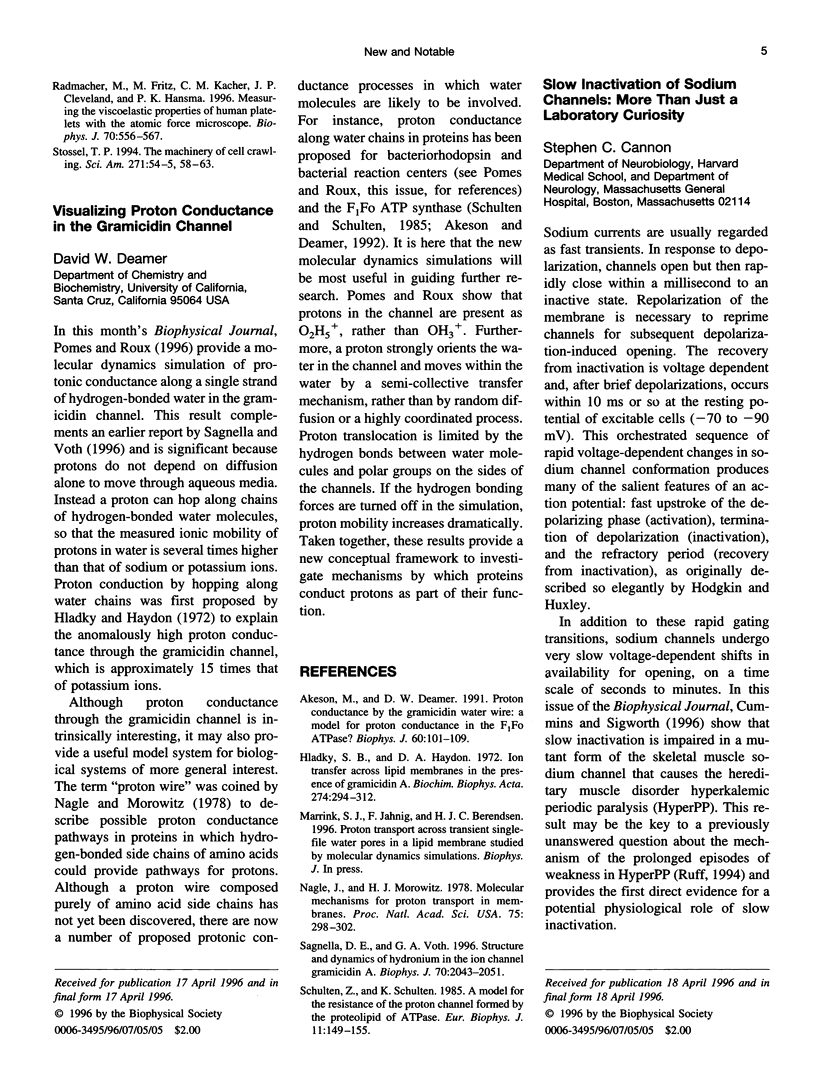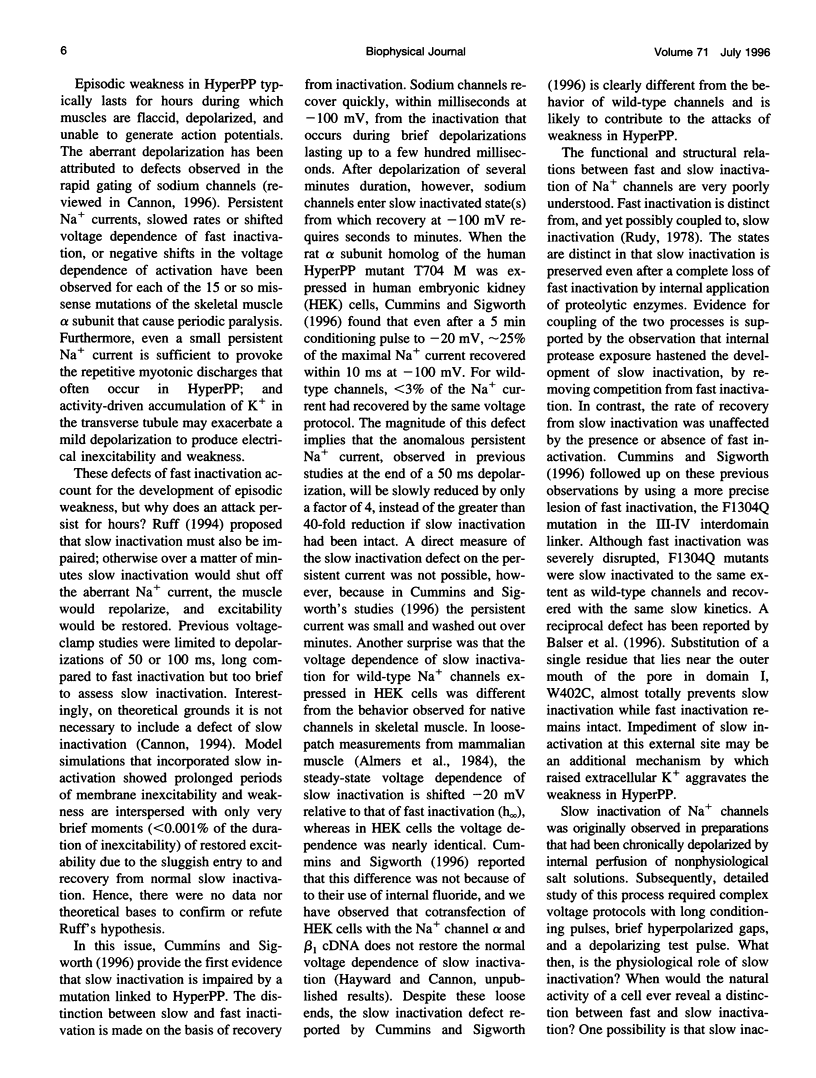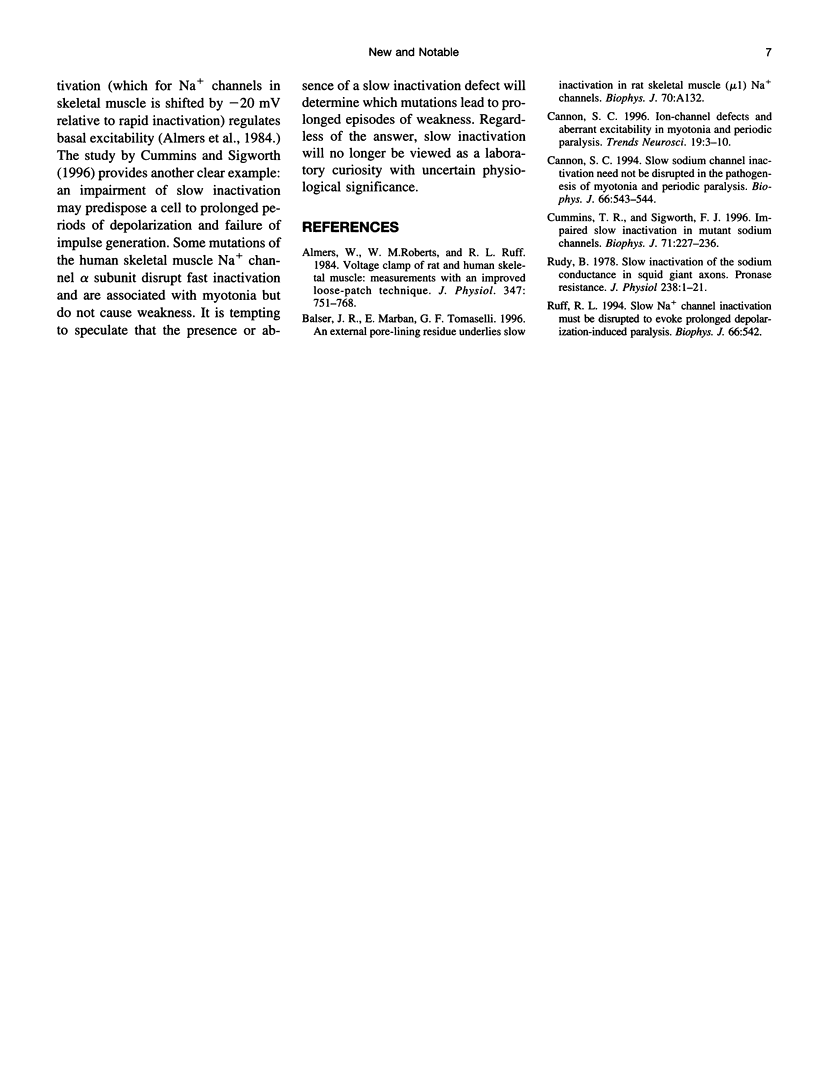Full text
PDF


Selected References
These references are in PubMed. This may not be the complete list of references from this article.
- Almers W., Roberts W. M., Ruff R. L. Voltage clamp of rat and human skeletal muscle: measurements with an improved loose-patch technique. J Physiol. 1984 Feb;347:751–768. doi: 10.1113/jphysiol.1984.sp015094. [DOI] [PMC free article] [PubMed] [Google Scholar]
- Cannon S. C. Ion-channel defects and aberrant excitability in myotonia and periodic paralysis. Trends Neurosci. 1996 Jan;19(1):3–10. doi: 10.1016/0166-2236(96)81859-5. [DOI] [PubMed] [Google Scholar]
- Cummins T. R., Sigworth F. J. Impaired slow inactivation in mutant sodium channels. Biophys J. 1996 Jul;71(1):227–236. doi: 10.1016/S0006-3495(96)79219-6. [DOI] [PMC free article] [PubMed] [Google Scholar]
- Rudy B. Slow inactivation of the sodium conductance in squid giant axons. Pronase resistance. J Physiol. 1978 Oct;283:1–21. doi: 10.1113/jphysiol.1978.sp012485. [DOI] [PMC free article] [PubMed] [Google Scholar]
- Ruff R. L. Slow Na+ channel inactivation must be disrupted to evoke prolonged depolarization-induced paralysis. Biophys J. 1994 Feb;66(2 Pt 1):542–542. doi: 10.1016/s0006-3495(94)80807-0. [DOI] [PMC free article] [PubMed] [Google Scholar]


